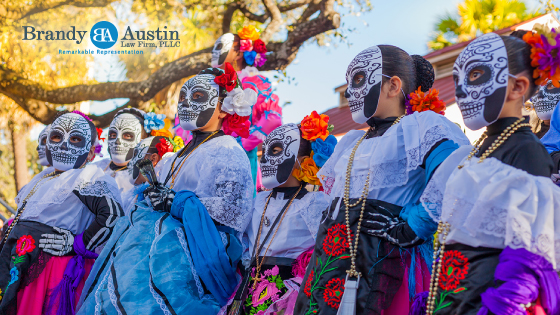
The celebration of Hispanic Heritage Month begins in the middle of the month of September and ends in the middle of the month of October; September 15-October 15.
The reason for this is to make the month coincide with national independence days in several Latin American countries.
Guatemala, Honduras, El Salvador, Nicaragua, and Costa Rica celebrate their independence days on September 15th
Mexico celebrates its Independence Day on September 16th
Chile celebrates its Independence Day on September 18th
Belize celebrates its Independent Day on September 21st
Hispanic Heritage History
Hispanic Heritage Week was initiated by LBJ in 1968. This was due to the Chicano Movement continuing to work for the same recognition as the African-American civil rights movement.
In 1988, the Reagan administration expanded Hispanic Heritage Week into a month-long celebration mandated by law.
History of Latinos in the United States
Immigration is a term that commonly comes up. When “Latino” or “Hispanic” is mentioned regarding politics. However, Hispanic and Latinos have been a part of the United States for just as long as most Anglo-Americans.
During colonization in North America during 1800, most of the United States was colonized by Spain, especially in the western United States. Then came the United Kingdom and France.
Terminology
Hispanic denoted people of a common Spanish-speaking culture, while Latino encompasses people of Latin American descent who live in the US.
A person is Hispanic when they come from a country that predominantly speaks Spanish. However, the term Latino is mostly based on a geographic location referencing Latin America. Lastly, the term Spanish is referring to a person from the country of Spain.
The term Hispanic includes Spain, but not Brazil, and the term Latino includes Brazil, but not Spain.
Not all Hispanics are Latino, and not all Latinos are Hispanic, but one can be both. For example, if a person from Mexico moved to Brazil, and had a Spanish-speaking child that then immigrated to the United States, that child would be considered both Hispanic and Latino.
There have been several academic debates on the appropriateness of the terms because they were invented mostly as a way to simplify categories in a large diverse group of people.
Some argue that the best way to refer to somebody is by their family’s country of origin, hyphen American. However, an issue arises when a person’s family originates from more than one place, meaning that including all places becomes confusing.
The term Hispanic did not appear on the United States Census until 1980, and the term Latino was added to the Census in 2000.
However, terminology also depends on where you might live in the United States. The region one lives in dictates what the common terminology used it. On the east coast, the term most often used is “Hispanic” The west tends to use the term “Latino” most.
Latinx Addendum
The term “Latinx” appears to have originated online, with the intent of using it for people who don’t identify with gender binary. A pro to this term is that it is inclusive. A con is that it’s anglicized Spanish.
X in Spanish pronounced with an English H, as in house. Or with a K-S sound, like in the English word “fix”.
In English, the letter X can also be pronounced as Z, like in the word “Xerox”
Intricacies of Ethnicity
Part of the reason for the nationality first attitude could be because of the fact that the media, and many people treat Hispanic or Latino as a separate ethnicity entirely. On a lot of paperwork, Hispanic of Latino is considered white, which could be true in some circumstances if a person is strictly of European descent.
However, when the Spanish and Portuguese colonized both the Americas, they did not have restrictions on who they would mate with. Due to the fewer restrictions, most Latinos have some Mestizo, European, Native, Mulatto, European, and African, or other combination in their ancestry. This was then used to implement a caste system where whiter people were given preferential treatment. So, while Hispanic or Latino has often been considered a kind of white, there’s really a mixture of ethnicities in most cases.
Language
There has been a lot of recent research featuring the benefits of being bilingual. A couple of highlights include:
A variety of cognitive processing benefits
Delayed effects of old age
Population
There are an estimated 57 million Hispanics in the United States, making Hispanic/Latinos the largest minority. About 18 percent of the United States population.
Mexican Americans account for two-thirds of the American Hispanic population. Almost half of the Hispanic population in the United States are considered millennials.
The United States is the second-largest Hispanic population in the world. Second only to Mexico.
More than 50 percent of the Latino population in the United States live in California, Florida, or Texas.
Issues Faced by Latinos & Hispanics
Discrimination against Latino job applicants – Latino applicants received less favorable treatment
Incarceration Rates – in 2010, Latinos get imprisoned at a higher rate than white people.
Representation- As the largest minority group in the United States, Latinos are still the most underrepresented ethnic group in Film.
